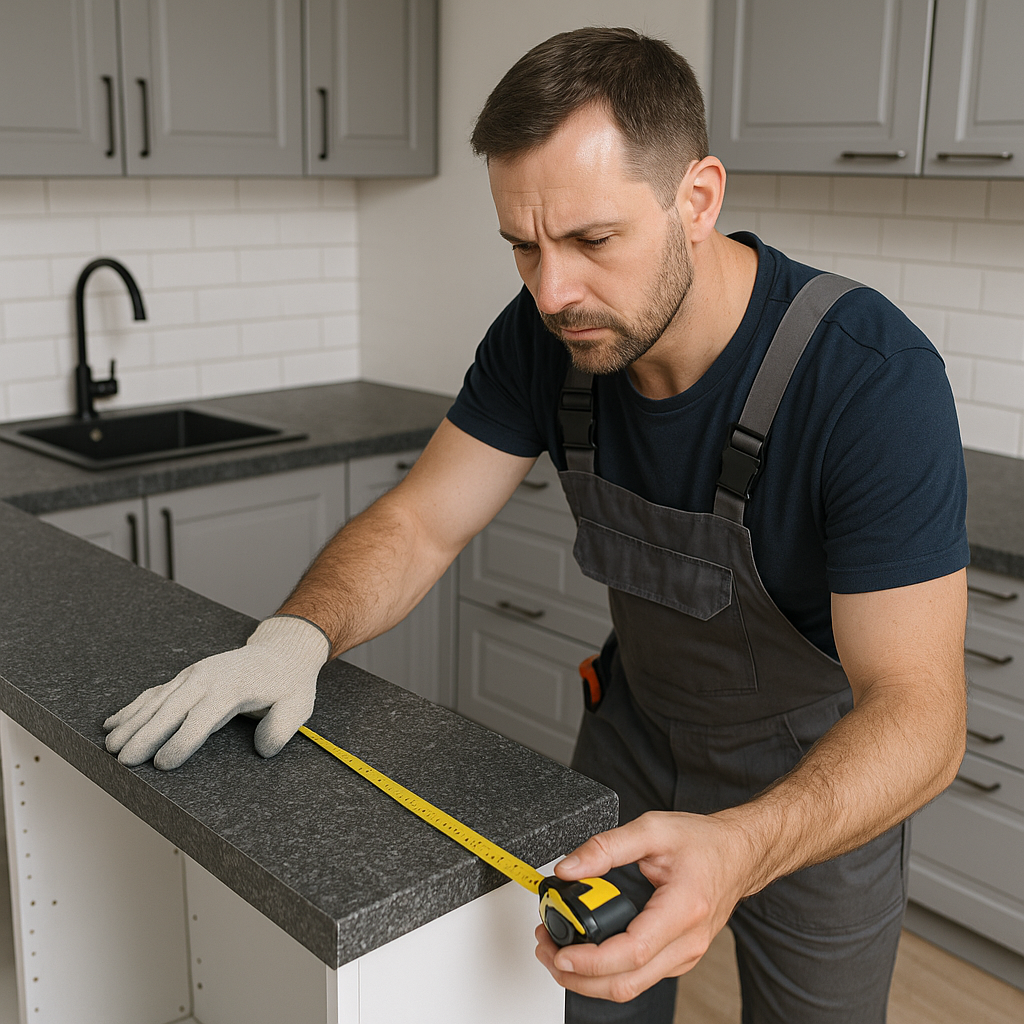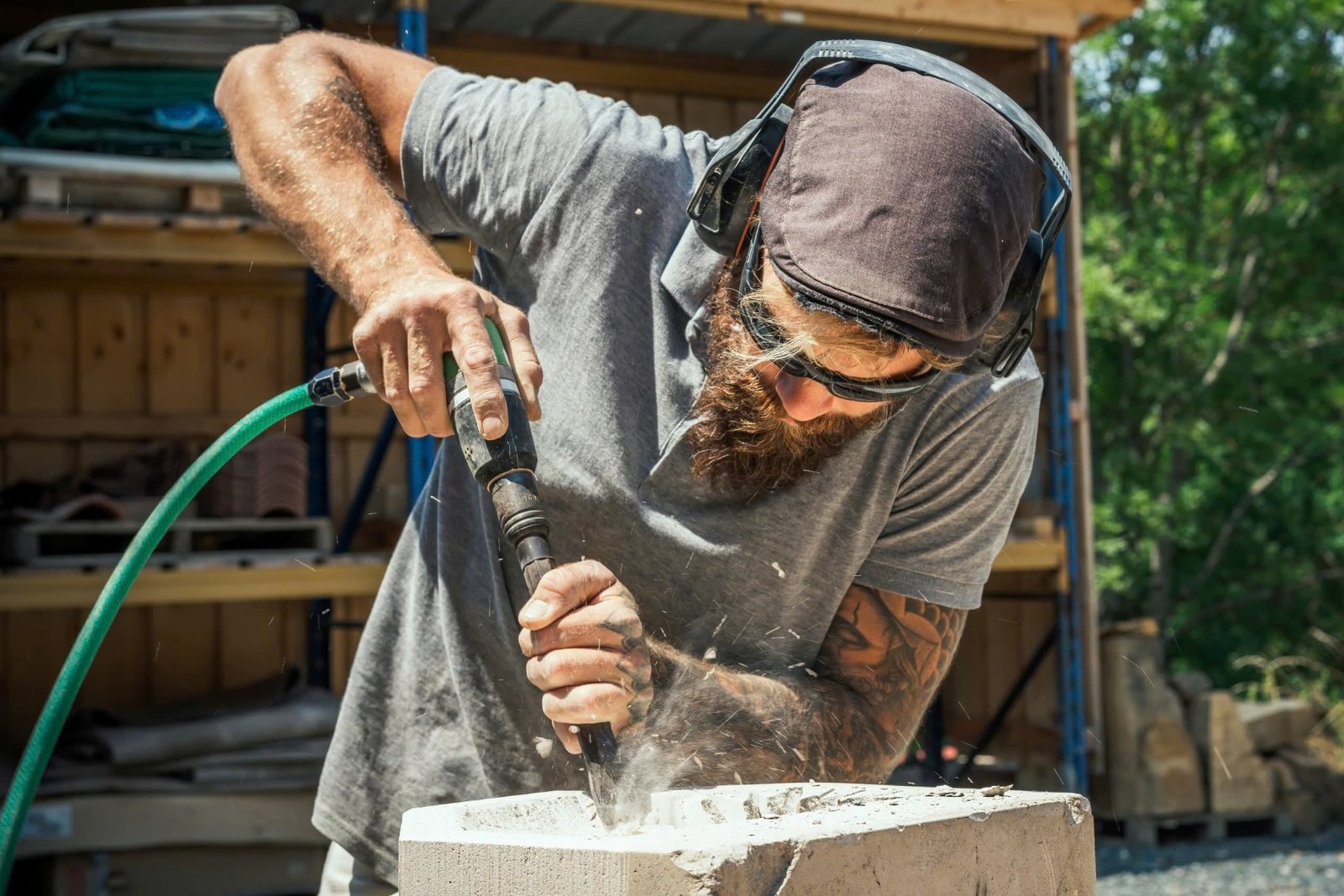
Countertop installation plays a critical role in the functionality, design, and resale value of any kitchen.
Countertop installation plays a critical role in the functionality, design, and resale value of any kitchen. For many homeowners, the question isn’t whether to upgrade their countertops, but whether to do it themselves or hire a professional. While professional installation ensures precision, more homeowners are choosing the DIY countertop installation route—and for good reasons.
From reducing countertop installation cost to gaining full creative control, installing your own countertop can be a rewarding experience if done correctly. In this article, we explore the key reasons why DIY might be the better option, what tools you’ll need, the potential risks, and how to prepare for success.

1. Save Significantly on Countertop Installation Cost
One of the most compelling reasons to opt for DIY kitchen countertop installation is cost savings. Professional installers often charge anywhere from $70 to $150 per square foot, depending on material, complexity, and region.
DIY savings include:
- Eliminating labor charges
- Avoiding markups on materials
- Only paying for the tools and materials you need
While there may be upfront costs for tools, these are often offset by the savings from not hiring professionals.
2. Flexibility and Full Control
By managing the project yourself, you set the timeline and make all decisions regarding:
- Countertop replacement design
- Edge profiles
- Material choices
- Kitchen countertop fitting options
- Seam placement and sink integration
DIY projects offer the chance to personalize every step—without being limited by a contractor’s preferences or schedule.
3. The Satisfaction of Hands-On Work
Installing your own countertop offers more than just financial benefits—it also delivers a strong sense of accomplishment. Homeowners who enjoy crafting, woodworking, or home improvements find great personal satisfaction in seeing a project through from start to finish.
It also builds confidence and skills for future home renovations.
4. Ideal for Smaller or Simpler Projects
DIY installation is especially suitable for:
- Bathrooms or small kitchens
- Prefabricated laminate or solid-surface countertops
- Projects with no seams, curves, or complex cutouts
With fewer variables to manage, these installations are perfect opportunities for confident DIYers.
5. Access to High-Quality DIY Resources
With the explosion of online tutorials, step-by-step videos, and community forums, there has never been a better time to learn how to install granite countertops or perform a quartz countertop installation at home.
Before you begin, ensure you’re equipped with the right gear. Read:
👉 What Tools Do You Need for DIY Countertop Installation?
6. More Material Customization
When you go the DIY route, you can source your materials from a variety of suppliers. This means you’re not restricted to what your installer offers, and you can:
- Hand-pick the exact granite slab or quartz pattern
- Compare prices across multiple retailers
- Use recycled or eco-friendly countertop options
This freedom helps you stay on budget while achieving your desired kitchen look.
7. Easier Scheduling and Pace Control
Professional projects are bound by contractor schedules. With DIY, you:
- Work on weekends or evenings
- Move at your own pace
- Make adjustments as you go
- Avoid delays due to contractor availability
This is especially useful if you’re remodeling a kitchen in phases or around other responsibilities.
Potential Drawbacks (and How to Avoid Them)
While the benefits of DIY countertop installation are real, the risks shouldn’t be ignored. Mistakes during installation can result in:
- Cracks and breaks
- Improper leveling
- Adhesive failure
- Poor seam alignment
Should issues arise, here’s what to do:
👉 Who Can Help If Something Goes Wrong During Your DIY Countertop Installation?
Hiring help for repairs or finishing work is always an option—and often more affordable than hiring a full-service contractor from the beginning.
Materials Best Suited for DIY Installation
| Material | DIY Friendly? | Notes |
|---|---|---|
| Laminate | ✅ Very easy | Prefab options widely available |
| Solid Surface | ✅ Easy | Can be cut and sanded at home |
| Butcher Block | ✅ Moderate | Requires sealing and cutting precision |
| Granite | ⚠️ Advanced | Heavy, brittle, and needs proper support |
| Quartz | ⚠️ Advanced | Requires special tools and polishers |
For granite countertop installation or quartz countertop installation, you must be prepared with the right tools and experience—or consider partial outsourcing.
Pro Tips to Ensure DIY Success
✅ Always Dry-Fit First
Ensure all pieces align before applying adhesive.
✅ Double-Check Leveling
Use a laser or bubble level to confirm even cabinet bases.
✅ Leave Expansion Gaps
Allow countertops to expand and contract naturally.
✅ Choose the Right Adhesive
Use silicone or flexible epoxy depending on the material.
✅ Reinforce Overhangs
Support any countertop extension beyond 12 inches with brackets or corbels.
Cost Comparison: DIY vs. Professional
| Expense Type | DIY (per sq. ft.) | Professional (per sq. ft.) |
|---|---|---|
| Material | $30–$90 | $30–$90 |
| Labor | $0 | $40–$60 |
| Tools & Supplies | $200–$500 (one-time) | Included |
| Total (10 ft kitchen) | $500–$1,400 | $1,000–$2,500+ |
The DIY approach saves significantly in labor but requires time, patience, and accuracy.
When You Should Still Hire a Pro
Despite the appeal of DIY, certain scenarios warrant professional help:
- Large kitchens with multiple seams
- Custom edge profiles or waterfall countertops
- Integrated sinks or backsplashes
- Tight deadlines or resale timing
You can still reduce costs by handling parts of the job yourself—like material pickup, demolition, or sealing.
Final Thoughts
DIY countertop installation offers cost savings, personalization, and the satisfaction of creating something with your own hands. While it’s not the right fit for everyone or every material, homeowners with the right tools and knowledge can enjoy high-quality results without the high price tag.
As with any home improvement, success comes from preparation. Equip yourself, research thoroughly, and don’t be afraid to ask for help if challenges arise.

